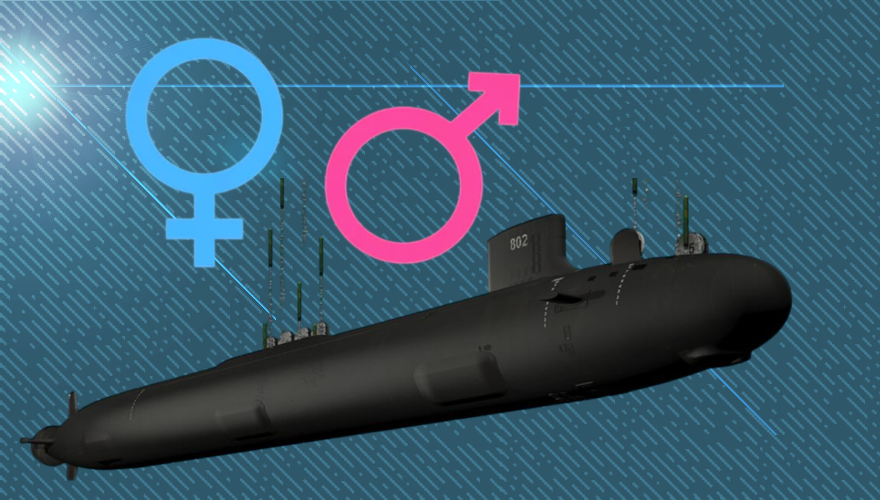The United States Navy has commissioned the first coed submarine.
The USS Navy is a Virginia-class, fast-attack submarine received by the military in April. The ship was specifically designed to accommodate a mixed-gender crew with spaces for women as well as men.
A commissioning ceremony for the USS New Jersey was held on Sept. 14 at Naval Weapons Station Earle in Middletown.
Commander Steve Halle, the vessel’s commanding officer, said the ceremony marked a “truly historic moment.”
"Our superior professionalism is enhanced by our crew integration and our diversity,” he said in a press release. “We have exceeded expectations at every turn and overcome every obstacle set before us."
The submarine is 377 feet long and can dive to depths greater than 800 feet. Approximately 135 members of the Navy make up its crew. It was completed after five years of construction.
The gender-accommodating modification includes additional doors to create separate bathrooms and sleeping areas, steps in front of triple-high bunk beds, and some lower overhead valves that are easier to turn.
“Fast-attack submarines are used for various Naval missions, including anti-submarine warfare, anti-ship warfare, strike warfare, special operations, intelligence, surveillance and reconnaissance,” per CBS News.
At least 730 women were assigned to operate submarines as of August of 2024. Ohio-class submarines have been retrofitted to create sleeping quarters for females and women’s bathrooms, per Stars and Stripes. The USS New Jersey is the first submarine intentionally designed for both male and female crew members.
The ban on women serving in submarines was terminated by then-Defense Robert M. Gates in 2010. The first female officers joined submarine crews in 2011.
“The integration of women on submarines served to increase the talent pool available to the Submarine Force,” said Lieutenant Sabrina Reyes-Dods, the Women in Submarines (WIS) coordinator, in 2021. “Women make up 57 percent of all degree-seeking college students and earn half of all science and engineering-based bachelor degrees. Twenty percent of U.S. Naval Academy midshipmen and 28 percent of NROTC midshipmen are women.”
“With the ongoing challenge of recruiting highly trained officers, integrating women allowed the Submarine Force to attract the nation’s best and brightest,” she added.
The change was not universally embraced. In addition to concerns about privacy, fraternization, and potential sexual harassment, the tight quarters of submarines would likely cause physical contact between men and women – complicating operations.
“It is impossible to pass one another in most passageways or working areas without turning sideways to pass one another, wrote John Mason, a retired senior chief petty officer, in a letter reported by Fox News in 2010.
“During times of emergencies, the situation becomes even more critical because shipmates are rushing to their casualty or their battle station, some going forward, some going aft, some climbing over one another to relieve a watch station,” he added. “All of these actions are critical to ensure the safety of the mission, the ship, and the crew. And all of them result in physical contact of one form or another.”
Women have been permitted to enlist in the Navy since 1917. Approximately 69,000 women are currently members of the branch.

